
The family of the groom convoy to the home of the bride.
Marriage in Pohnpei is between families. Ancient traditions are still central to marriage.

The family of the groom convoy to the home of the bride.
In the past the family would have walked, but modern times typically have the family moving by car.
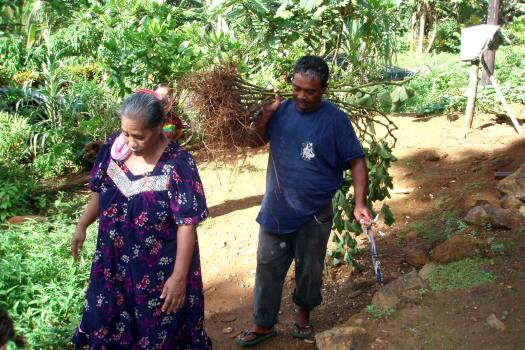
The father brings only sakau (Piper methysticum).
To bring more than sakau might be taken the wrong way by the bride's family. The exception is when sugar cane is brought with the sakau. If sugar cane accompanies the sakau the name of the plant changes to sakauen pahnta.
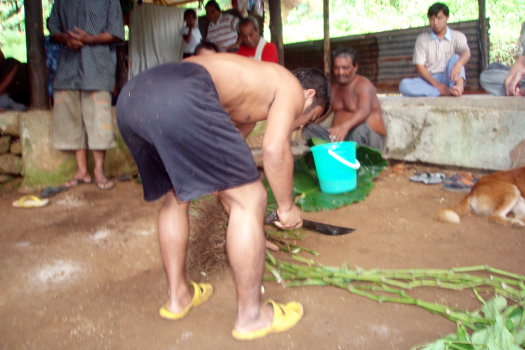
Cutting of the branches of the sakau
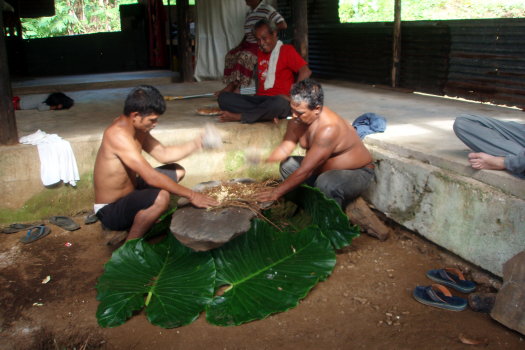
Sukusuk: the pounding begins.
The request for the bride will be proceeded by the traditional performance of nohpwei - the first four cups of sakau. This part of the ceremony is a constant for all occasions.
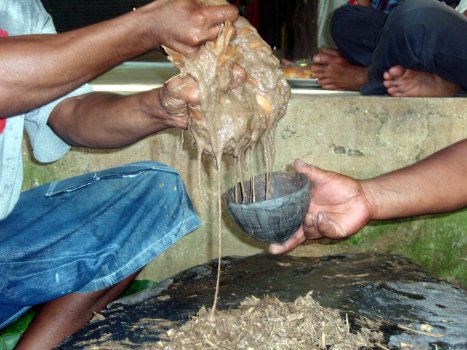
The first cup, pwehl, is prepared.
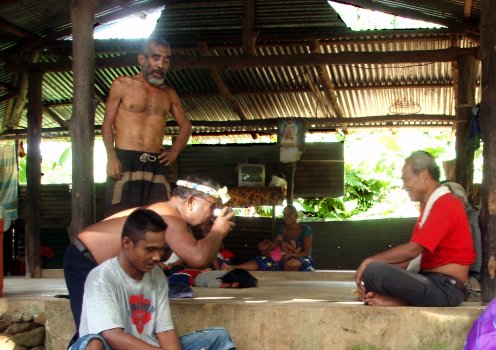
The highest title present is offered the first cup. The groom is represented by Luhk, a high title in Kitti.
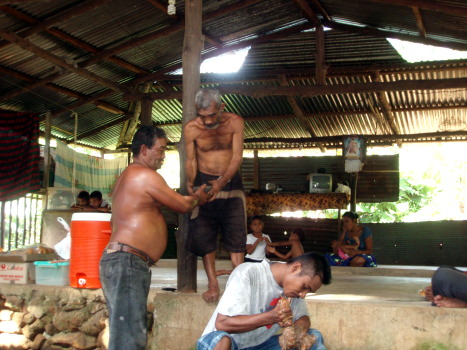
The second cup, arehn sakau, is passed by the father to the menindei.
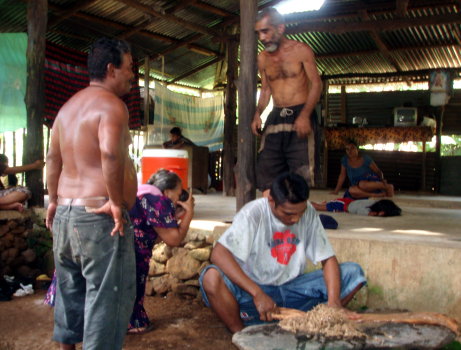
The third cup, esil, goes to the highest titled woman in the Sokehs variant of nohpwei.
The fourth cup (not shown) is sent back up to front platform. The fourth cup closes the formal ceremonial portion of the sakau ceremony.
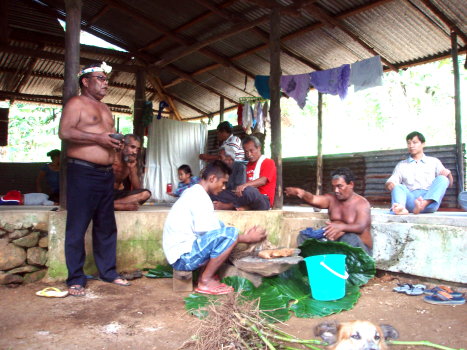
Holding the fifth cup, the spokesman for the groom offers an explanation of why the groom's family has come.
Theoretically, up until this time no one would necessarily know the reason someone has come into one's nahs with sakau. Although there may have been a time when some families arranged marriages, in both traditional and modern times the groom has been the one who selected his bride. In traditional times they would have met secretly under the cover of night. In Pohnpei, the ideal is that one finds that one special partner one will love for a lifetime. Conceivably the bride's family might have objections to a young man who has been secretly seeing their daughter. That all might save face, the groom's spokesman first tells a legend of a troublesome boy and the importance of forgiving the boy. Thus he indirectly asks for the forgiveness of the bride's family for anything the groom might have done with their daughter. Then the spokesman asks for the young woman. The fifth cup is then offered to the father.
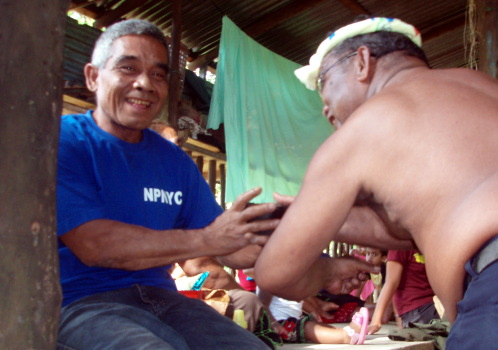
The father of the bride assents to the request for his daughter by accepting the fifth cup.
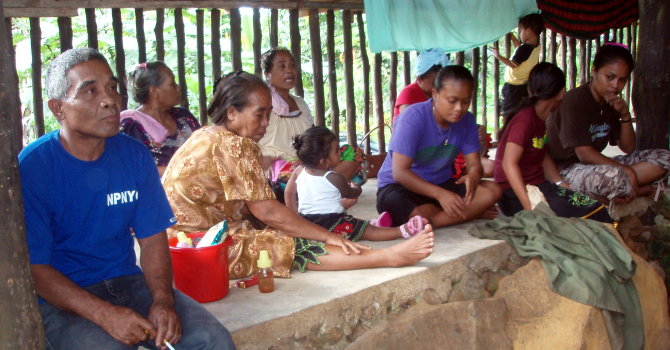
The mother of the bride instructs the new husband on his responsibilities in regards her daughter.
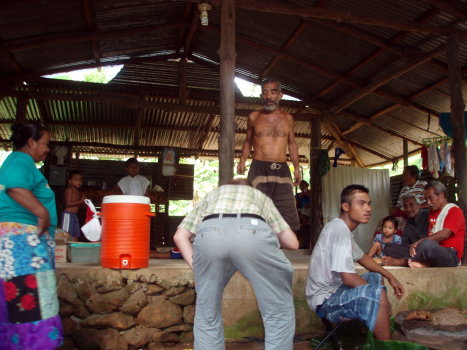
The new husband is called to receive the cup.
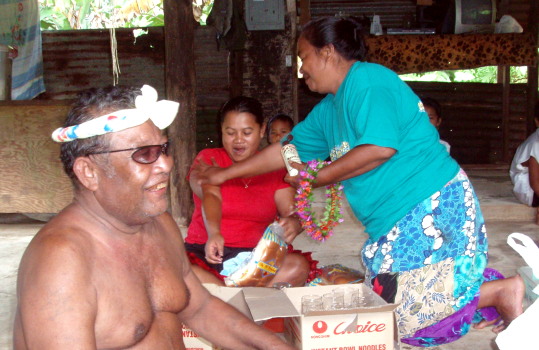
The husband's family shows that they will care for the new addition to their family by annointing her with marekeiso oil and crowning her with flowers

Aimy Manuel Gourlay
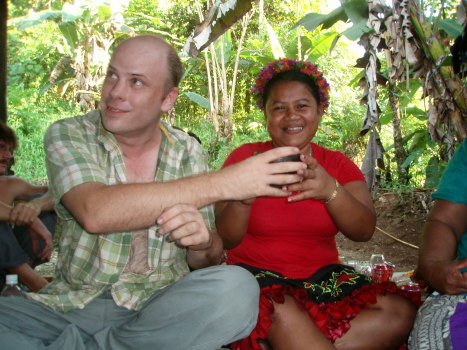
The new husband, Jonathan, offers a first cup to his new wife.
The husband and his family will leave with the new wife to return to his home with his family. In Micronesia, both in the past and present, a woman leaves her home and joins the family of her husband.
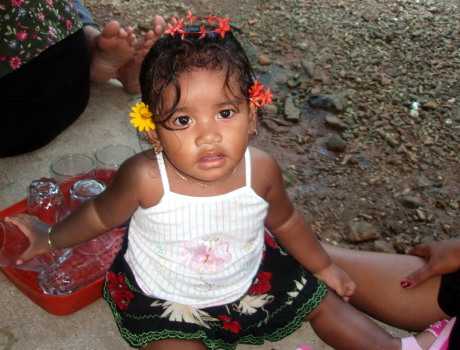
Although not a tradition, what modern wedding would be complete without a flower girl?
Inaccuracies in the preceding are wholly the fault of the photographer and page author.